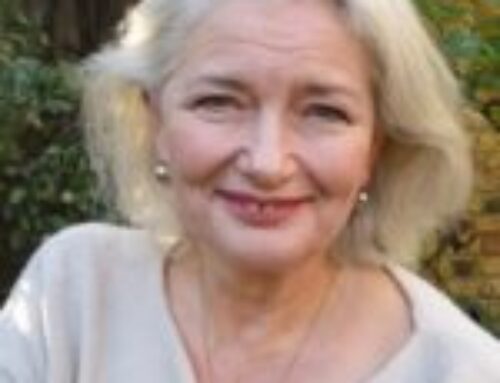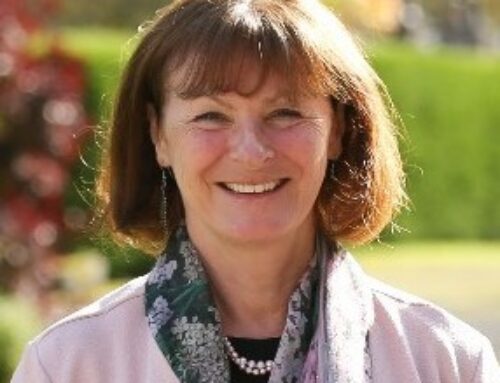How did you first come across Dalcroze Eurhythmics?
It was the summer school in Canterbury, in 2008. A friend of mine, Ignacio Agrimbau, had been to London to do a music workshop (given by Cynthia Wilson). He said it was a very special approach to learning music; people were having fun and bouncing balls to respond to the rhythm. He persuaded me to consider the summer school. I had no idea what Dalcroze was, but I think I understood that it combined movement, singing and improvisation. Maybe I also looked for information online, I don’t remember.
I was very into free improvisation at the time, so it came as a bit of shock when it dawned on me halfway through the week that the improv lessons were focused on improvising for movement. “Play a melody in triple time, using the Aeolian mode” and so on. I remember that I took my balafon (a pentatonic instrument with a limited range) to Canterbury, as I am percussionist. So, I used this in some of the classes and did the best I could. I’m not sure what the teachers made of me. I think I must have played some piano as well. Anyway, I got the Dalcroze bug and I think people around me could see that. The Dalcroze Society (as it was known at the time) asked me to write a reflection for the newsletter, which I did. It included a poem that I have returned to several times and integrated into my subsequent research publications.
Where / when did you train?
After the summer school, I signed up for the Certificate course, which was held in Croydon. I remember feeling so excited at the summer school, but also profoundly moved. Something had shifted inside. I wanted to continue immediately.
What do you remember most about your training?
I think it continued to open my eyes. I remember the feeling of satisfaction when getting a canon right, for example, but also the challenges of solfa and improvisation. I had a decent bass voice back then and that came in handy. It was also exhausting! I was living in Southampton, with a part-time contract at the university, then travelling to Bristol for two days a week doing the MA Music Therapy training. And then once a month going up to London. Looking back, it was crazy: lots of kipping on floors and in spare rooms and doing endless prep and marking on trains.
Who has inspired you in DE?
I think I have to include all the teachers on the 2008 summer school; without them I wouldn’t be doing what I am today – for sure. Some teachers, such as Ava Loiacono, Paul Hille and Françoise Lombard, have helped me to transcend myself and explore parts of my musical self (especially aspects of my voice) I never knew existed. As I got to know more about Dalcroze histories and the complexities of the relationships between different traditions of training, I also began to admire those teachers who have maintained training programmes despite not having strong connections with Geneva, such as Eva Wedin in Sweden, and those who persevered through Communism, when exchange with the rest of Europe was not easy. Here, I am thinking about Anetta Pasternak (Katowice), Elżbieta Aleksandrowicz (Łódź) and other colleagues in Poland, as well as Ginta Pētersone in Latvia. I have also been inspired by Dalcroze teachers who I never met, but have learnt about and researched, for example Joan Llongueres, Mimi Scheiblauer and Priscilla Barclay. These pioneers did extraordinary work.
I count myself very fortunate to count Selma Odom as a close colleague, collaborator and mentor. She is a constant source of inspiration. Patsy James’s care for the Dalcroze UK archive and her sense of the importance of preserving traces and memories have definitely inspired my historical research. I also want to acknowledge all the members of the ICDS Scientific Committee, past and present. But, most of all I want to mention Bethan Habron-James. It was her rhythmics class on the first day of the 2008 summer school that lit a flame that has never gone out.
What has been the highlight of your Dalcroze journey?
That’s a tough one. I think leading ICDS for 11 years has to be up there. It was a life-changing endeavour for me, personally and professionally. It established a much-needed platform for Dalcroze-related research to shine, but it also ignited collaborations with many wonderful colleagues around the world. Next year I will bring out a book of Dalcroze histories, with Selma Odom and Johanna Laakkonen as co-editors, so that’s probably a close second. It’s provisionally titled Mapping Dalcroze Practice and is the outcome of a long labour of love whose progress has been disrupted many times, but we’re nearly there!
What was the origin of the first International Conference of Dalcroze Studies?
I’ve told this story elsewhere, so I won’t repeat it here. I compiled a booklet to celebrate the first decade of ICDS, and the hosts who took on the baton after Coventry – Angelika Hauser-Dellefant (ICDS2), Josée Vaillancourt (ICDS3) and Anetta Pasternak (ICDS4) – all contributed to it. If I may say so myself, I think it’s a good read! You can download it here.
What are you most proud of from all the conferences?
Most of all, I feel very gratified that it got traction. People seemed to see the same need as I did. As a result, it grew and grew, and people have clearly wanted to invest in it. I think it’s proved its worth, as it’s inspired many people to undertake research, or at least to engage with it, and to deepen their reflective practice. It has built a community of open-minded and curious spirits who not only enjoy the creativity, freedom and transformative nature of Dalcroze and related practices, but also want to do serious intellectual work. I think it still has a way to go to develop its impact and to connect different communities, but it has very strong foundations. I am very excited about ICDS7 at the University of Luxembourg in 2025, and the new leadership team (Eric Barnhill, Stephen Neely, Luc Nijs) is doing a great job.
How do you see the future of Dalcroze in the UK?
The impression I get is that Dalcroze UK’s infrastructure is strong, and this will help make the training more sustainable in the long term. I think effective partnerships will be very important and drawing on – even supporting – research that can demonstrate some of the benefits of Dalcroze participation will help with advocacy. There are also opportunities to look at the dance and sport worlds to develop our understanding of how Dalcroze can be more accessible to disabled musicians. I’m coming to the end of a long research collaboration with Dalcroze UK graduate Marlies Muijzers, whose story is a kind of test case. We hope to publish next year. Finally, I am still the Archives Liaison Officer for Dalcroze UK, but haven’t done so much work since just before the pandemic (the last big deposit of materials was in October 2019). So, that’s another area I think we could develop, especially getting practitioners interested in their ancestors, so to speak, and bringing to life some of the wonderfully evocative materials we have in our archive at the University of Surrey.
Do you have any other thoughts about Dalcroze Eurhythmics that you’d like to share?
Just that I think it’s a very precious practice. In fact, I’ve often thought that eurhythmics could be seen as a form of intangible cultural heritage. As such, it requires all those involved to commit to nurture, develop and sustain it, and not to be afraid of asking searching, critical questions, so it continues to be relevant and to thrive in the twenty-first century.
https://www.dalcroze-studies.com/_files/ugd/efbc0f_a5d6b0153b034746b485debced72aa28.pdf




